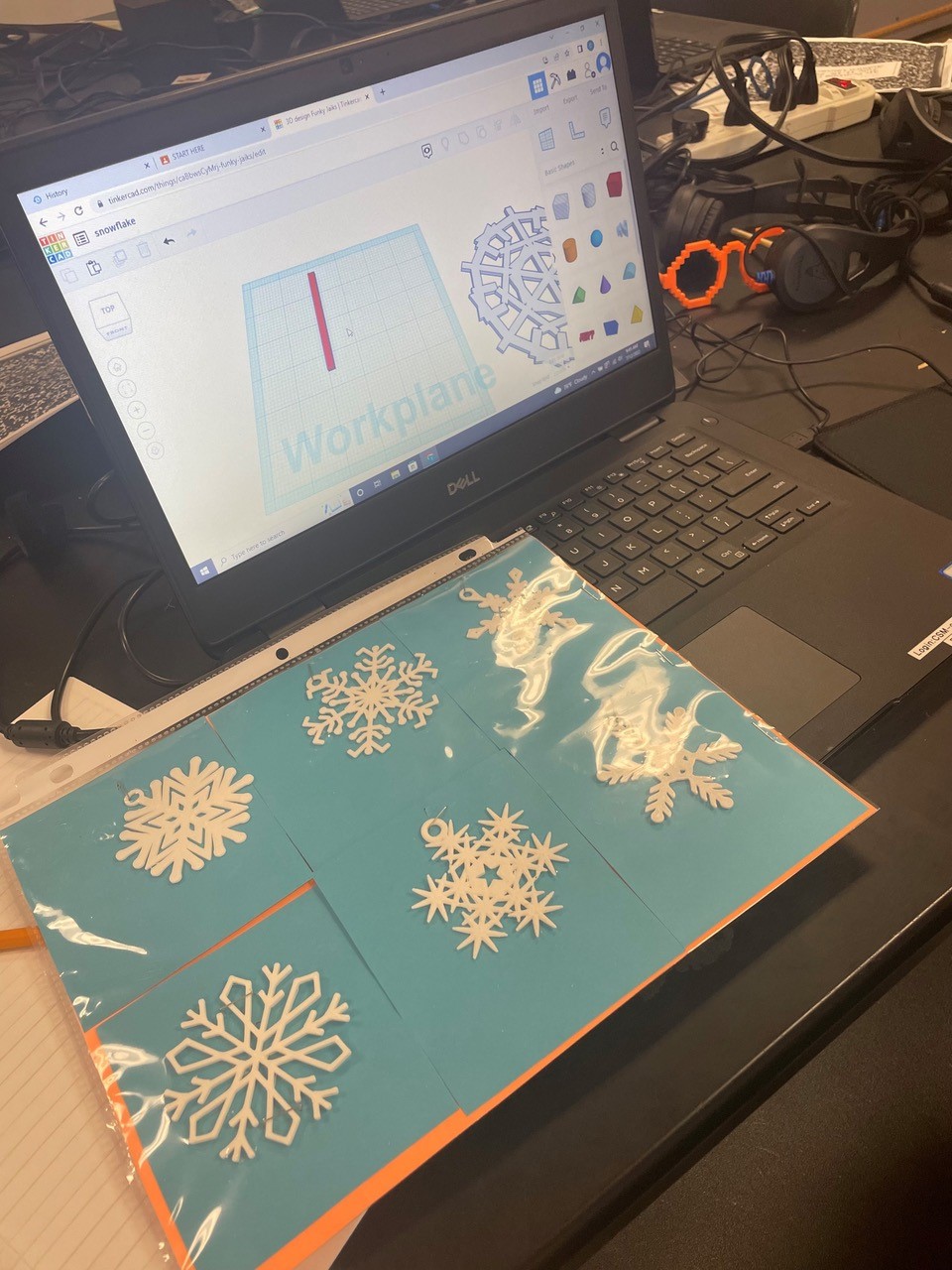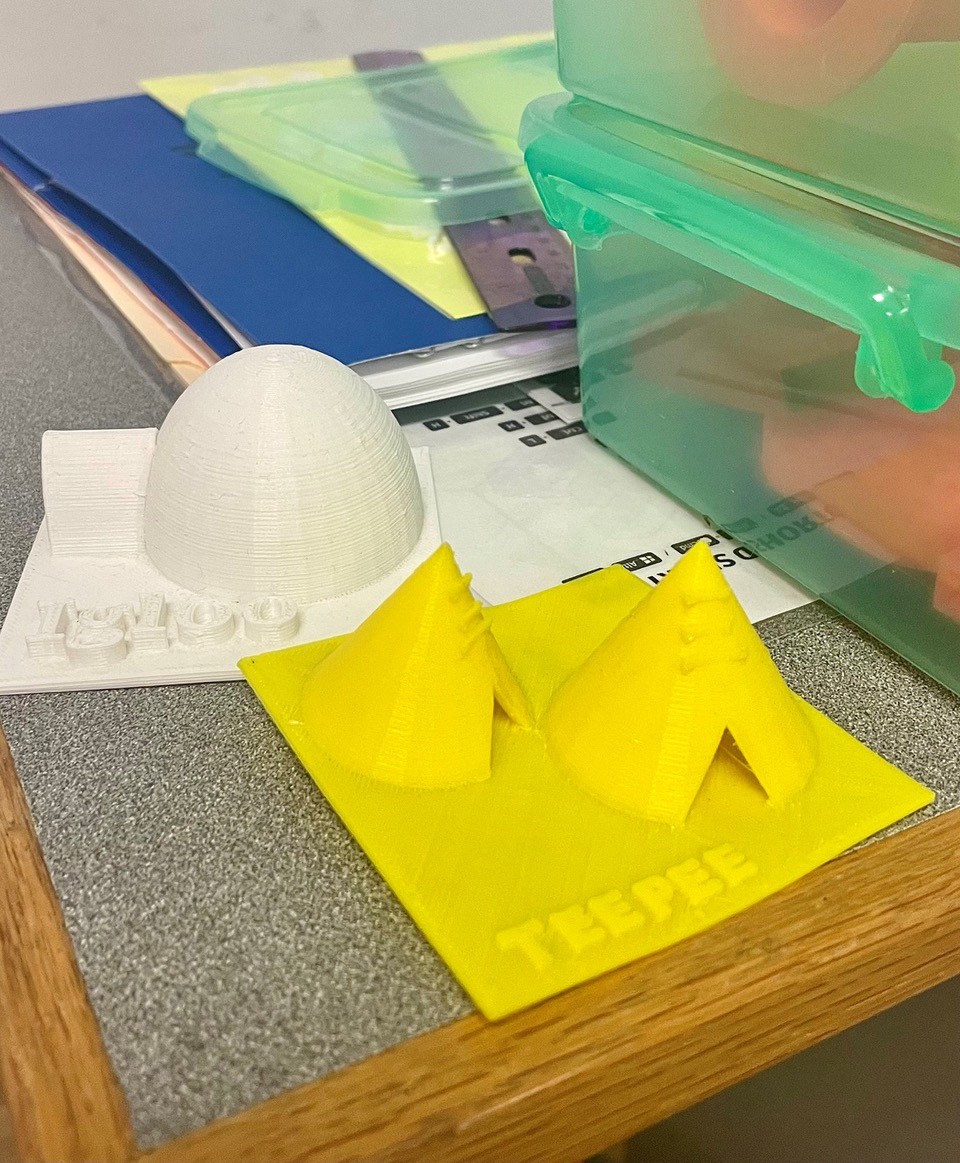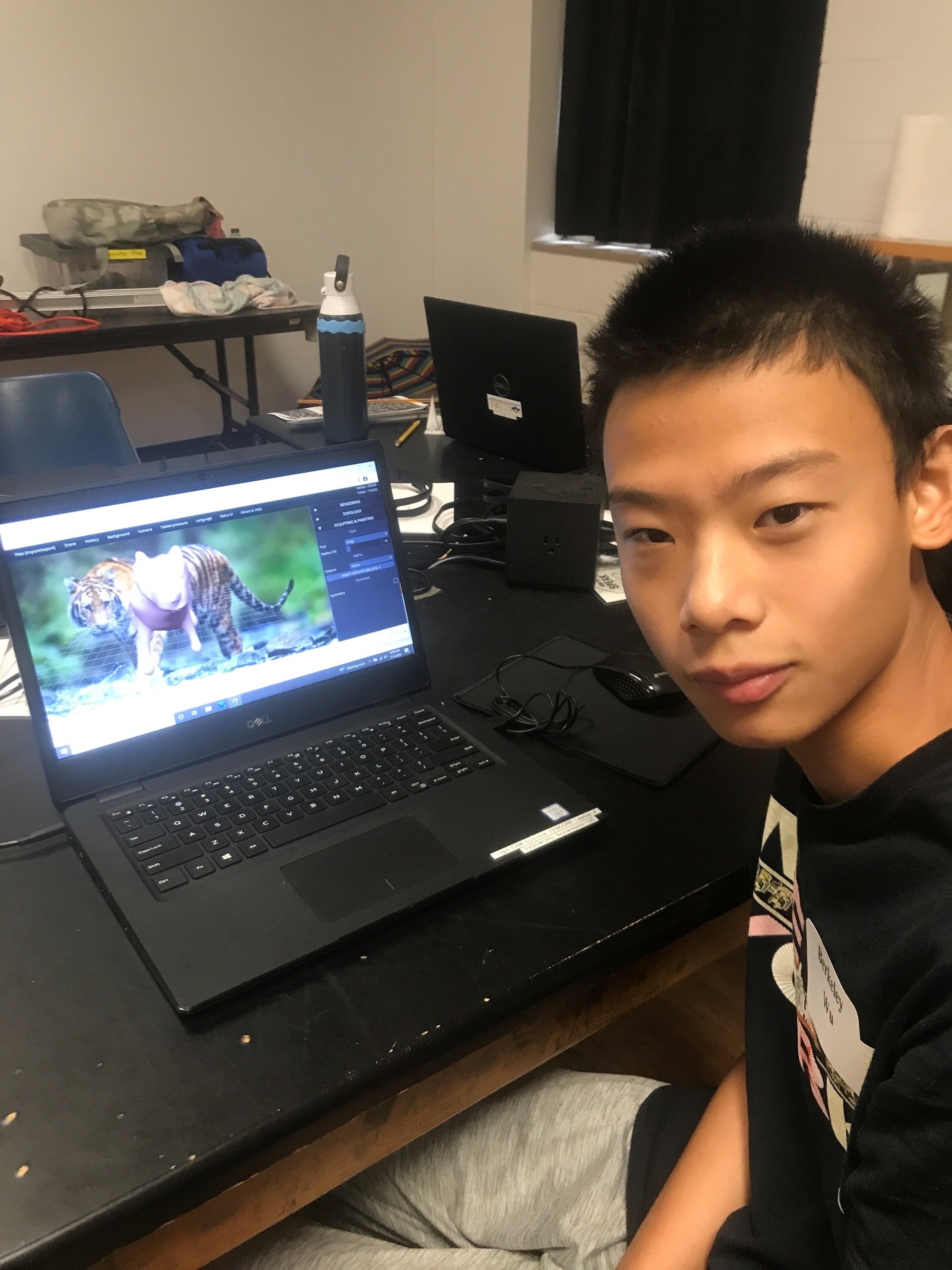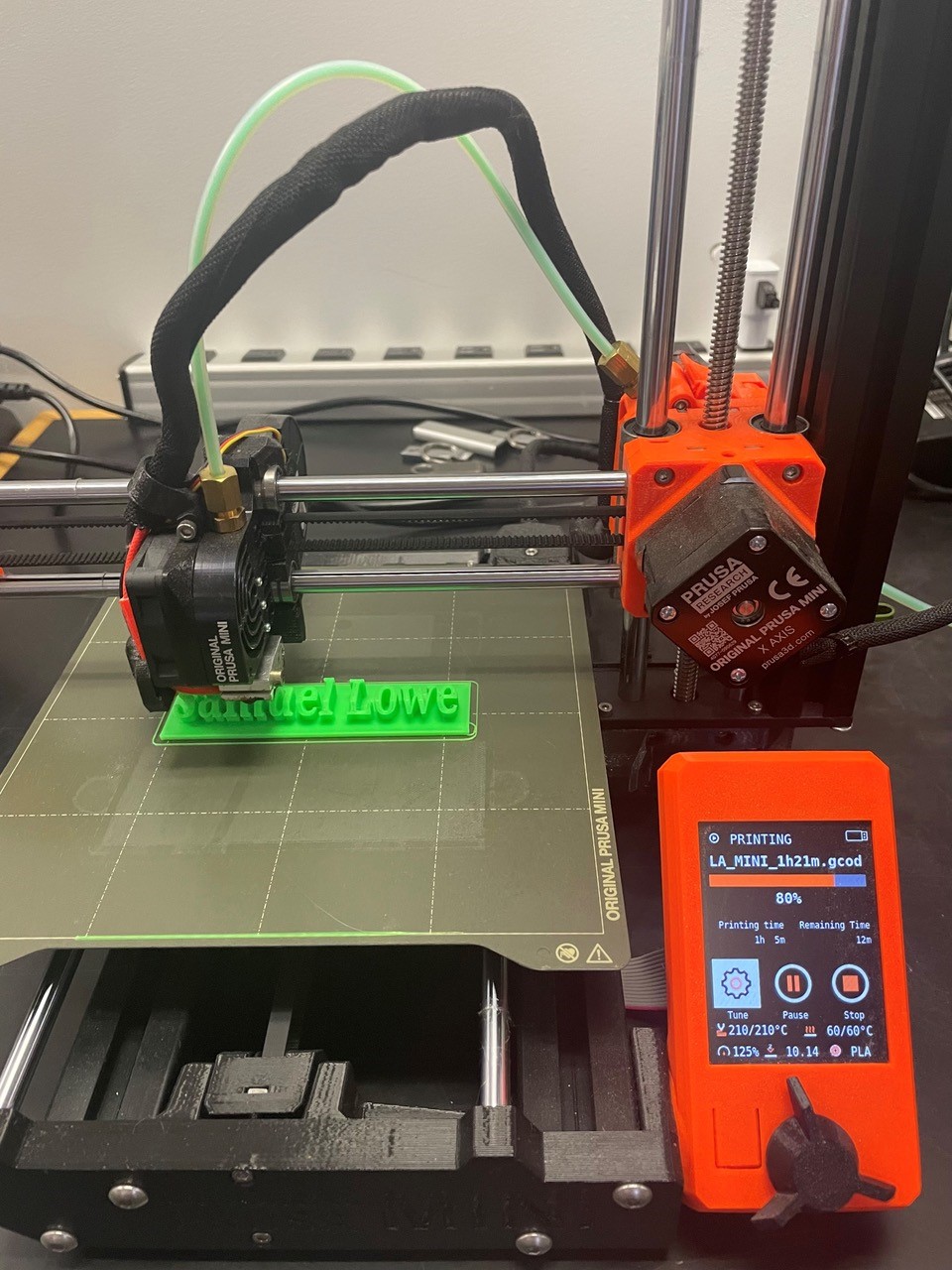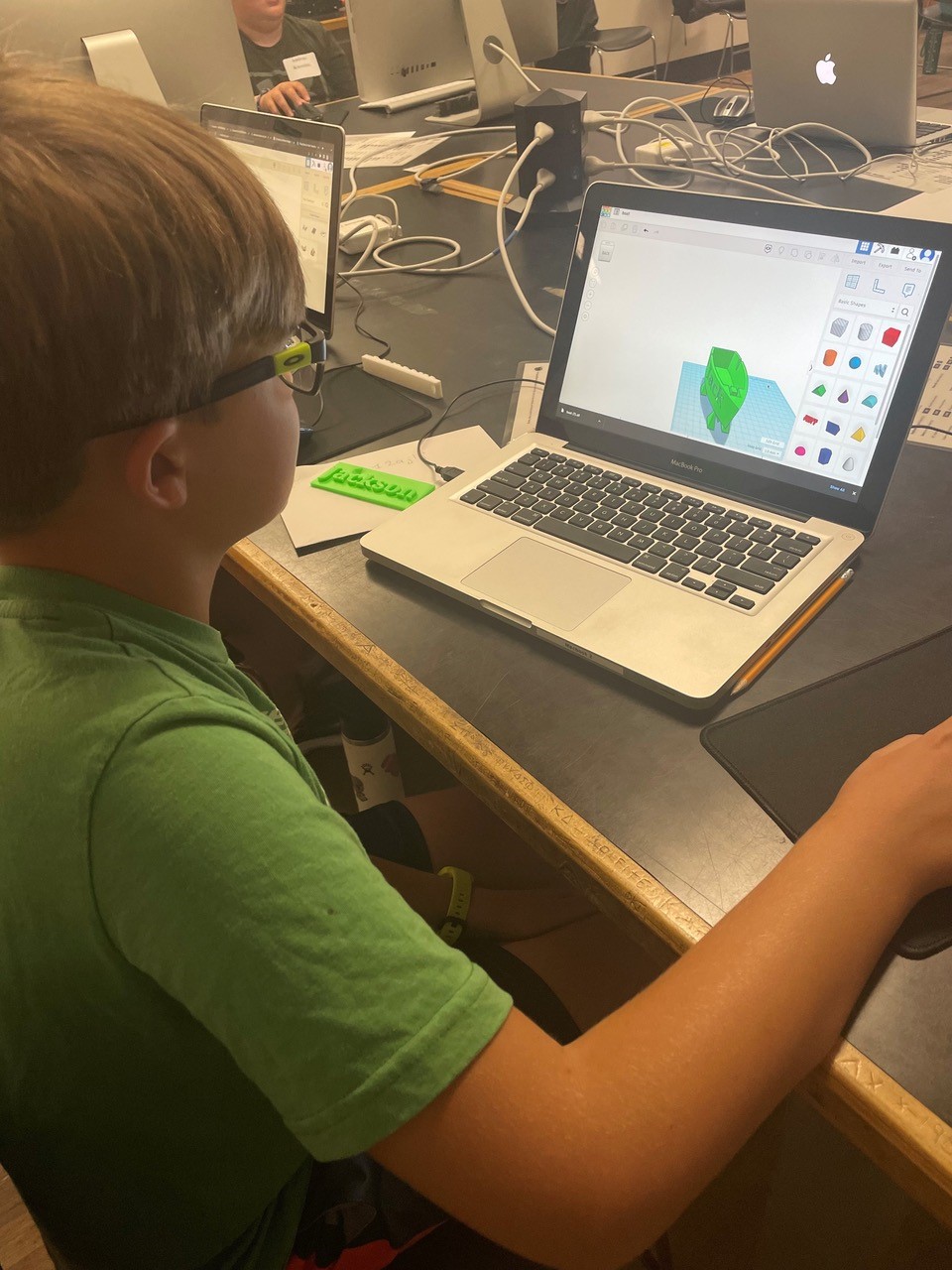COSAM News Articles 2022 July Elementary students turn imaginative ideas into tangible creations at SCORE’s 3D Printing and Design Camp
Elementary students turn imaginative ideas into tangible creations at SCORE’s 3D Printing and Design Camp
From July 11–15, the Southeastern Center of Robotics Education, or SCORE, hosted introductory and intermediate 3D printing and design camps, giving students an opportunity to engage in creativity while developing software, engineering and design skills through active learning and print projects.
Held at Auburn University’s Beard-Eaves Memorial Coliseum, the camps were divided into two groups—an introductory-level camp designed for students who had little to no experience with 3D printing and an intermediate-level camp for those who had some prior experience with 3D printing through attending a previous camp or having used a 3D printer at home.
In each camp, students utilized the engineering design process throughout the week to solve everyday problems using CAD modeling and 3D printers in an exciting hands-on experience with innovative technology.
Led by Mary Waterhouse, an elementary teacher at Asbury Elementary School in Marshall County, the introductory camp started with the basics of 3D printing and design and covered how to go from concept to product using Tinkercad software and state of the art 3D printers. In the first few days of camp, they quickly began to print custom designs like a pair of eyeglasses and a personalized keychain.
Maggie Hall, who attended the introductory camp, learned how certain features in Tinkercad can speed up the design process, making it more user friendly.
“When designing my keychain, I learned that Control + D duplicates a shape in Tinkercad,” said Hall. “I used that shortcut to create multiple shapes and grouped them into one longer shape, which made it easier to design the final product.”
In the intro camp, Waterhouse explained the progression of many creative print projects that students got to design throughout the week—projects that not only involved the engineering design process, but also tied into various educational aspects of history and science.
“Students designed and printed flat objects such as snowflakes and then moved to dimensional objects like printing ten different types of Native American homes and dwellings. We further explored 3D printing using the SculptGL application where for our final project, students chose one of the ten most endangered animals in the world to sculpt.”
Led by Beth Bass, who teaches the Venture class at Wrights Mill Road Elementary School in Auburn, the intermediate camp gave students with prior 3D printing experience an opportunity to explore more advanced design concepts.
“Throughout the week, we incorporated projects that built on 3D printing and design skills that our students were already familiar with such as importing and modifying files in Tinkercad, using a slicer and using calipers for measurements,” said Bass. “For example, most of these students have already made basic nametags, but in our intermediate camp, we learned how to import fonts into Tinkercad from Google fonts, and we used an angle, duplicate feature to give nametags a more multi-dimensional appearance.”
Students in the intermediate camp sharpened their engineering design skills by being tasked to design a boat in Tinkercad with the challenge that the boats had to float, hold as many pennies as possible and take under two hours to print.
“My boat design originally started out taking over eight hours to print, but we are learning about modifications to the design process and how making certain changes can decrease the printing time,” said camper Jackson Jolly.
“Throughout the week, students got to work on projects involving articulated designs,” said Bass. “They also designed and printed a personal case that can be used to hold their jump drives. 3D printing usually involves many files needing to be stored on jump drives, so this was a practical application where they designed and printed an item that will be useful to them.”
With new design projects introduced daily at camp, students used their imaginations and critical thinking skills to bring real-world applications and concepts to life while developing valuable technical skills in 3D software and printing technology.
SCORE is an Auburn University outreach initiative in the College of Sciences and Mathematics, or COSAM, designed to help effectively develop and deliver robotics and STEM education to K-12 students and teachers. SCORE’s annual summer camps allow participants to explore STEM in a unique environment on Auburn University’s campus. For more information on SCORE summer camps, please contact Jennifer Spencer, SCORE assistant director, at jennifer.spencer@auburn.edu.
Latest Headlines
-
04/23/2024
-
04/18/2024
-
04/18/2024
-
04/18/2024
-
04/17/2024



